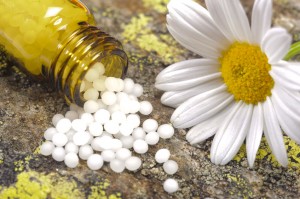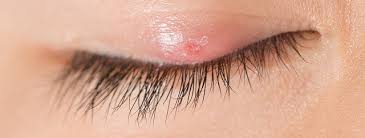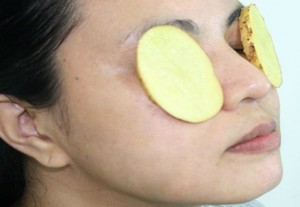Styes are caused by an inflammation of one of the Meibomian or sebaceous glands, which line the edge of the eyelid. Staphylococcus is often the infecting agent. The condition may occur by itself or along with conjunctivitis or iritis. It begins with pain, redness and tenderness of the lid margin and is soon followed by swelling and induration (hardening) of the affected area. As the condition progresses, the lesion ruptures, expelling pus.
Blepharitis is characterized by a red, scaly and slightly thickened margin of the eyelids and is often associated with seborrheic dermatitis. Children may awake with matting and dried crusting of the eyelids. Food allergies should be suspected if present.
Generally, the presence of a stye is not considered a severe condition and is more often seen in children who rub their eyes a lot due to allergies. If the inflammation does not resolve and begins to spread, infection of the surrounding tissues of the eye or the eye itself may occur, which needs to be evaluated by a physician to prevent the possibility of blindness.
The purpose of therapy is to speed up and lessen the discomfort of the natural progression of the condition, which can last up to 5-7 days without any treatment.
What to do until the doctor is seen
- Monitor the patient’s temperature and pulse, even though an elevation in temperature doesn’t occur often. If one does, a physician should be consulted.
- For best results, a combination of homeopathic medicines, hot fomentations, and drawing poultices can be used.
- Allow the body’s normal healing response to occur, as attempting to speed things up by extracting the lesion will only increase the chance it will spread.
- When the stye begins to drain, be sure to clean frequently.
If a stye has developed after a period of high stress and pressure, make a deliberate point of taking adequate rest and include foods in your diet that have a reputation for boosting the immune system, such as fresh fruit, vegetables, whole grains, nuts, seeds, garlic, and green and/or white tea. Avoid sugary foods, which lower the immune system while also encouraging bacterial infection to develop.
Hydrotherapy
Hot Fomentations: Applying a hot, moist compress to the stye or eye with blepharitis assists the healing process. A clean washcloth dipped in hot water can be left on for up to 10 minutes at a time. Or, wet and wring out a cloth, heat in a microwave, and apply for up to 10 minutes. The length of heating will vary based on cloth size and microwave power, but take great care that the cloth is not hot enough to burn sensitive skin.
Use a potato or apple poultice to help draw out the stye. Grate or slice the potato or apple so that it is thin and can be placed between some clean gauze, muslin, or white cotton sheeting. Place this over the affected area. You can use a hot water bottle to keep a poultice warm. A poultice can be kept in place for 1 to 24 hours, or as needed. You may experience throbbing as the poultice draws out infection. Apply fresh poultices as needed.
Homeopathy
Any of the following homeopathic options can be very helpful in easing the inflammation and discomfort of a stye, encouraging it to resolve itself gently, quickly, and efficiently. However, an underlying tendency to develop frequent and/or severe styes would suggest that more professional help is required from a homeopathic practitioner.
 Conium: Stony hard indurations of the lids. The slightest ulceration or abrasion will cause intense photophobia is accompanied by excessive lachrymation (tearing).
Conium: Stony hard indurations of the lids. The slightest ulceration or abrasion will cause intense photophobia is accompanied by excessive lachrymation (tearing).
Hepar sulph: Can be used to help the lesion come to a head and drain if it is sensitive to cold and better with heat.
Pulsatilla: Biting, itching and burning in the canthi (corner of the eye) and lids, especially in the evening. Patients have agglutinated eyelids in the mornings of a yellow, bland mucus discharge. They are generally thirstless and worse with heat.
Rhus tox: Styes and abscess with violent itching, burning and swelling of the eyelids. Onset, following exposure to cold and dampness. Useful with iritis, orbital cellulitis, and pustular inflammations of the lids and orbit. Useful with swelling and redness of lids and face that are accompanied by a fever.
Silicea: Recurrent styes which do not tend to localize in any one place. There is a feeling of dryness like sand in the eye. Silicea can be used to help the lesion come to a head if there isn’t an indicated homeopathic medicine.
Staphysagria: Styes that are on the left side more often than the right and on the upper lid more often than the lower. They begin as a central pimple with smaller ones around it, then become larger. They feel as if there is a hard substance underneath.
Sulphur: Redness of the margins of lids, with burning and stinging. There is a yellow or whitish discharge that is excoriating and there may be ulceration of the lid margins. There may be dry and flaking skin on the face and body.











